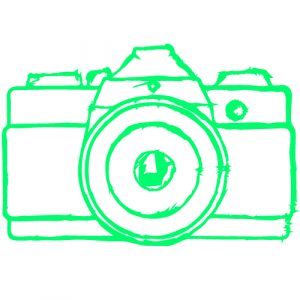Capturing reflections in photography can transform a common scene into a breathtaking image. Using reflections effectively allows photographers to add depth and interest to their compositions, creating a visual narrative that draws in viewers. Whether it’s the stillness of a lake, the glossy surface of a city street after rain, or even a mirror, reflections can enhance an image’s storytelling potential.
To achieve striking results, it’s essential to consider the angle, lighting, and subject matter. A well-placed reflection can create symmetry, balance, and a sense of intrigue. Photographers should experiment with different surfaces and environments to discover how reflections can elevate their work.
Incorporating reflections into photography is not just about finding a shiny surface; it’s about understanding how to use them to enhance the overall composition. With practice and creativity, anyone can learn to make reflections a captivating element in their photography.
Understanding Reflection Photography
Reflection photography utilizes various surfaces to create striking visual effects. By mastering different reflective surfaces, adjusting camera settings, and applying thoughtful composition techniques, a photographer can significantly enhance their images.
Types of Reflective Surfaces
Common reflective surfaces include water bodies, mirrors, and polished materials. Puddles, lakes, and rivers can produce beautiful reflections, especially during golden hours when the light is softer. In urban settings, glass facades and shiny pavements also provide unique perspectives.
For optimal results, it’s essential to observe one’s surroundings. Taking note of how light interacts with surfaces can inspire creative shots. Photographers should experiment with angles and distances to utilize reflections effectively, enhancing the overall visual appeal of their photographs.
Camera Settings for Capturing Reflections
Selecting appropriate camera settings is key to capturing reflections. A narrower aperture (high f-stop number) helps achieve greater depth of field, ensuring both the reflection and the subject remain sharp.
Adjusting shutter speed can also influence the outcome. A slower shutter speed might soften water ripples, emphasizing the reflection, while a faster speed will capture sharper, more defined reflections.
Photographers should consider using a tripod to maintain stability. Additionally, experimenting with focal lengths can produce unique effects. For instance, wider angles may enhance the prominence of the reflected scene.
Composition and Framing
Composition plays a crucial role in reflection photography. Using the rule of thirds can guide the viewer’s eye, placing points of interest along intersecting lines.
Incorporating leading lines, such as the edges of a pond or the lines of a city street, can draw attention to reflections. Framing the subject with natural elements enhances the picture’s depth and context.
Photographers should also pay attention to symmetry. Perfectly symmetrical reflections can produce stunning images but may require careful positioning. Each decision in composition directly impacts the strength of a reflection photograph, making it a vital aspect of the creative process.
Technical Aspects of Reflection Photography
For photographers interested in capturing stunning reflection images, understanding how to manipulate natural light and the use of a tripod significantly enhances the quality of the images. These elements combine to create depth and clarity in photos while allowing for creative perspectives.
Utilizing Natural Light
Natural light plays a crucial role in reflection photography. The best time to capture reflections is during the golden hour—shortly after sunrise or just before sunset. This soft, diffused light brings warmth and enhances colors, resulting in eye-catching images.
When positioning the camera, consider the angle of the light. Backlighting can create dramatic effects, while side lighting often emphasizes textures and details. Photographers should also monitor weather conditions; overcast days can create softer shadows, adding depth to the reflection.
Using a polarizing filter can help reduce glare on surfaces, making reflections clearer. Always be mindful of the light source’s position to maximize the interplay between light and reflection.
Tripod Use for Stability
Using a tripod is essential in captures involving reflections. Having a stable platform minimizes camera shake, especially in lower light conditions during the golden hour. This stability ensures clear, sharp images, maintaining detail and vibrancy.
Photographers should adjust the tripod height and angle to change perspective. A lower angle can provide a more immersive view of the reflection, while a higher angle can capture more of the surrounding environment.
Additionally, using a remote shutter release or the camera’s timer can further reduce shake. This technique helps achieve superb clarity, allowing every element within the reflection to shine.
Creative Approaches to Reflections
Reflections can elevate photography by adding layers of complexity and intrigue. Through specific techniques, photographers can explore both abstract interpretations and practical applications in capturing product and landscape photos.
Abstract Reflections in Photography
Abstract photography often benefits from reflections that distort reality. Techniques such as using water surfaces with ripples can create intriguing patterns and textures.
Photographers can capture reflections in windows or mirrors, merging different environments. This method plays with light and perspective, leading to unexpected compositions.
In street photography, reflections in shop windows can intricately blend foreground and background elements, resulting in dynamic images. Photographers should consider angles and the time of day to maximize lighting variations, enhancing the visual impact.
Product and Landscape Reflections
In product photography, reflections are crucial for conveying a sense of quality and elegance. Using reflective surfaces like glass or polished wood can draw attention to the product itself while maintaining a clean aesthetic.
For landscape photography, bodies of water serve as natural mirrors. Still lakes or ponds can perfectly reflect mountains or trees, creating symmetry.
Incorporating weather elements, such as mist or clouds, adds mood. Photographers can experiment with different times of day to capture varied colors in reflections, enhancing the overall composition.



